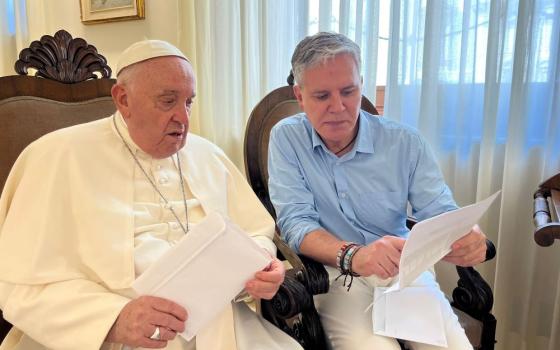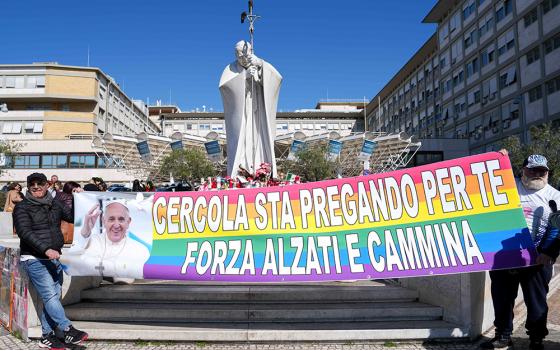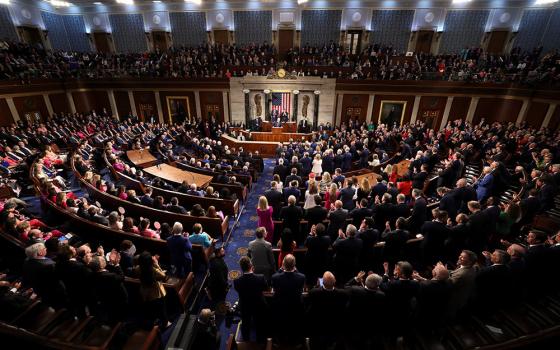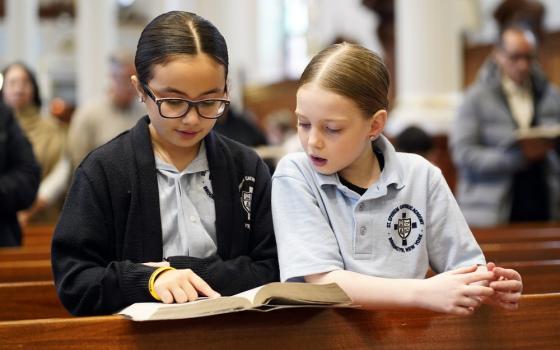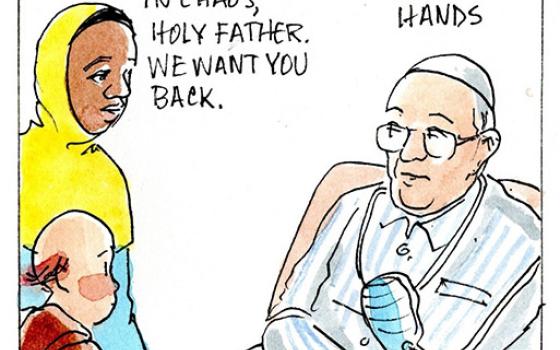The expansive environs of the Andes Mountains of Peru range from rain forest to alpine. (CNS/Greg Tarczynski)
What speaks in the depths of silence? What whispers through the void when words fail us? How do we hear God in the spaces between breaths, in moments when language crumbles under the weight of human suffering?
These questions feel particularly urgent today as we witness the devastating conflicts in Gaza and Ukraine, wildfires and mass shootings across America, and ongoing global crises of all kinds. Our flood of words — racing through social media, echoing in empty streets, crying out in protest — seems to grow hollow with each passing day. Our language has become a brittle shell, too fragile to hold the magnitude of our collective grief. Yet, in this poverty of words, there is an unexpected wealth: the profound presence of silence.
This silence is not the peaceful absence of noise so often celebrated in spiritual retreats, but something far more complex and powerful: a silence that could both wound and heal, oppress and liberate.
I do not romanticize silence nor treat it as a cure-all. The silence imposed upon victims of abuse, colonialism, racism and gendered violence is not the silence I advocate for. Rather, I argue that theology — and public discourse more broadly—must learn to distinguish between silencing and silence. The former is coercive; the latter can be transformative.
As a Catholic theologian, I explore silence not just as the absence of sound but as God’s own language: a divine tongue speaking through the empty tomb of Jesus, the speechless grief of his disciples and the trembling joy of Resurrection. The theological framework of my research weaves together two main threads: first through the Christian mystical tradition of voices like Evagrius Ponticus (345–399 AD) and Hadewijch of Antwerp (Born: 1200), who knew the terrible beauty of divine silence; then through contemporary suffering, from the collective grief of South Korea’s ferry disaster (2014) to the defiant quiet of marginalized women and the paradoxical joy found in spaces of loss.
In this sacred space, whether mourning victims of war or systemic injustice, we learn to unsay our certainties, to listen with our whole beings, to attend to the smallest sighs and whispers that only silence can reveal.
What has emerged is a vision of silence as a spiral of concentric circles, one in which we sit together in shared vulnerability, each person’s pain threading into a larger tapestry of human experience. In this sacred space, whether mourning victims of war or systemic injustice, we learn to unsay our certainties, to listen with our whole beings, to attend to the smallest sighs and whispers that only silence can reveal.
From war-torn streets to protests for DEI justice, from the cries of climate activists to the quiet despair of those displaced by conflict, our world is filled with voices demanding to be heard. How do we listen to suffering without rushing to simplistic solutions? How do we resist the urge to fill the void with empty rhetoric? Silence, when engaged contemplatively, can be a form of resistance against the dehumanization that suffering often brings. It allows us to sit with complexity rather than reduce it to soundbites. It challenges us to hear the voices that are often ignored — the refugees in limbo, the grieving mothers, the displaced, the wounded.
Through this journey into silence, we discover new ways of listening, new ways of being present to both divine and human suffering and ultimately, new ways of encountering the ineffable love of God in our troubled world.
Advertisement

